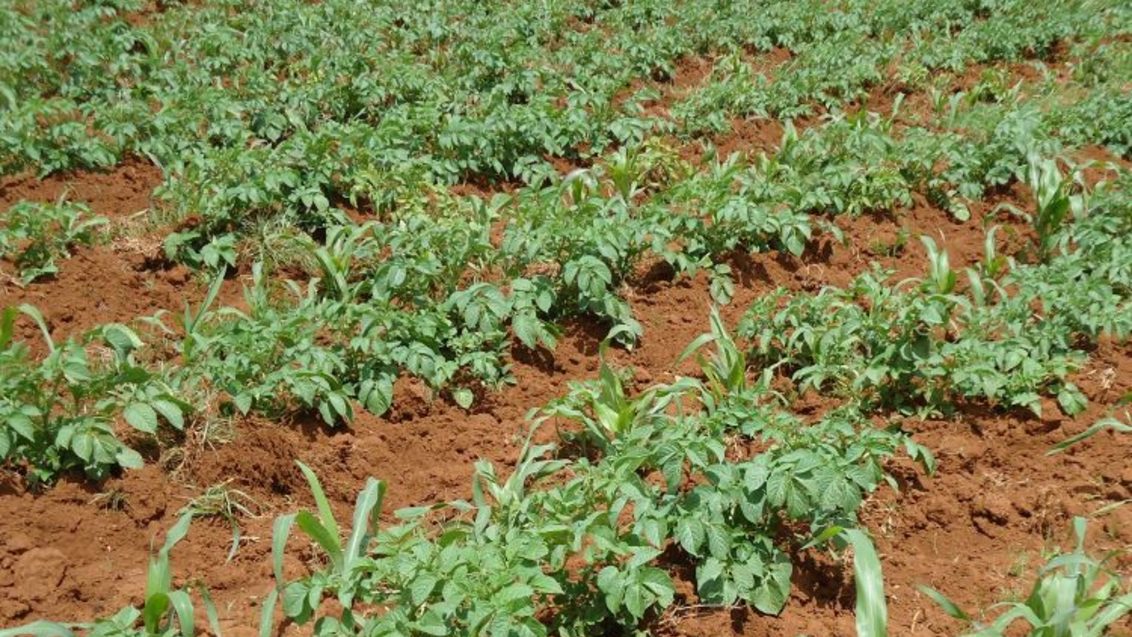Too good to be true? Big hurdles remain

Our Foundation is a pioneer of ‘carbon finance’ schemes for smallholders. We worked here with the World Bank and public sector donors. Together, the partners developed the first-ever fund to invest in voluntary carbon credits for emission reductions from more sustainable farming. They also developed the first methodology to account for such reductions. The BioCarbonFund ran from 2004-2020. Dominik Klauser, our R&D Lead, explains the main findings and maps ways forward.
Syngenta Foundation: How did the BioCarbonFund (BCF) work?
Dominik Klauser: The BCF essentially paid smallholders to farm better and got carbon credits in return! The idea is to reward farmers for producing crops more sustainably. That means optimizing their use of resources such as land, water, and inputs. Smallholders’ changes in practices translate into emission reductions. These can be measured, allowing carbon credits to be claimed. These credits are then available for a variety of uses – for instance for trading, or for compensating one’s own emissions.
Why did the Foundation join the BCF?
In most developed countries, farming systems are incentivized for being sustainable. Examples include public sector subsidies or value chain incentives such as certification and related ‘Labels’. However, those require deep government pockets and/or enough consumers willing to pay premium prices for the labeled produce. Those sources of funds are typically unavailable to smallholders in developing countries. However, we believe it’s essential to incentivize large numbers of these farmers to adopt more sustainable practices. Carbon finance is a promising tool to do so!
What are the key lessons from the BCF?
Above all: We now know that smallholder carbon finance can work. Most BCF projects met their targets for reducing emissions. Results-based payments from the fund contributed to farmer income or paid for better extension and training. These improvements raised smallholders’ productivity and profitability. We also saw rising demand for carbon credits from agriculture and buyers’ willingness to pay premium prices for emission reductions from smallholder farming. As so often with price elasticity: the story matters! All the BCF agricultural projects have secured purchase contracts beyond the fund’s lifetime. They continue to thrive and grow.
It sounds almost too good to be true. Where are the catches?
Several challenges remain. For smallholder carbon finance to expand, they all need addressing. One problem is that today’s emission reduction certification schemes (ERCS) are highly complex. This makes projects very costly – both the development and validation. Up-front finance and strong technical support from the World Bank were both keys to BCF's success. Where such support is unavailable, replication and scaling are difficult. ERCS technical and legal requirements are another big challenge. Many smallholders can’t provide legally binding land titles, and virtually none can commit to continuing emission reductions for 20 years! Transaction costs can also be prohibitive.
What does that all mean for the future of agricultural carbon finance?
It’s currently far easier, and far more profitable, to register one 10,000-ha farm in the global North than 10,000 one-hectare holdings in the global South. There is thus an imminent risk of creating yet another finance scheme that excludes those who probably need it most. We have got to change this.
What are the Foundation’s plans?
Firstly, we want to share our findings with the world. Our aim here is to catalyze the discussion and provide ideas for more inclusive carbon finance schemes. We provide some insights in a World Bank summary report and our recent paper on incentive schemes for more sustainable farming. We are determined to keep this debate going!
We are also developing new projects to connect smallholders with carbon finance schemes. Our strategic partners here include the One Acre Fund (1AF) and The Nature Conservancy. We are still in the scoping phase but see great potential to build on the existing 1AF activities and network.
